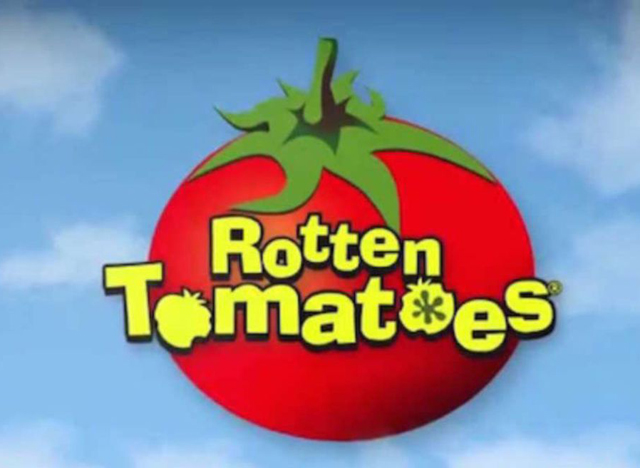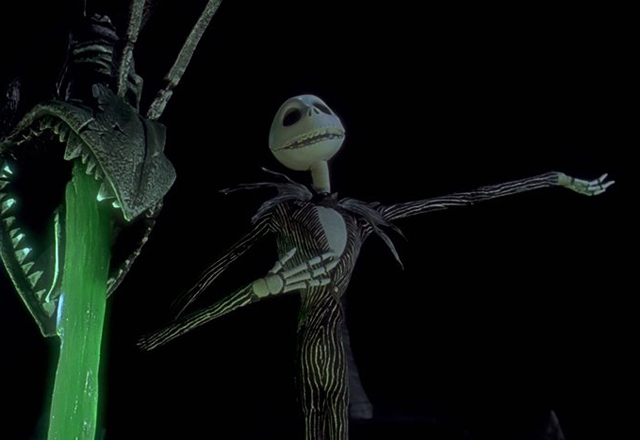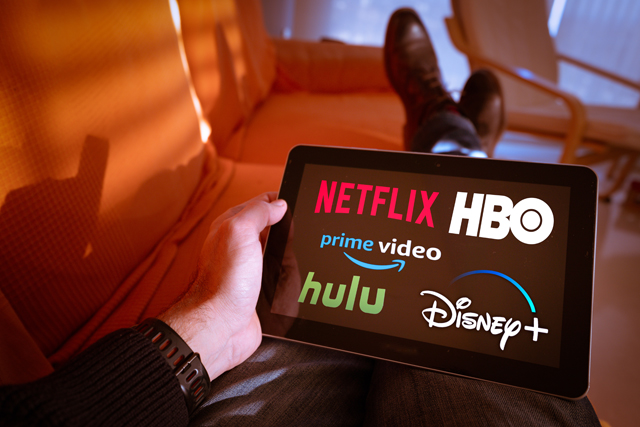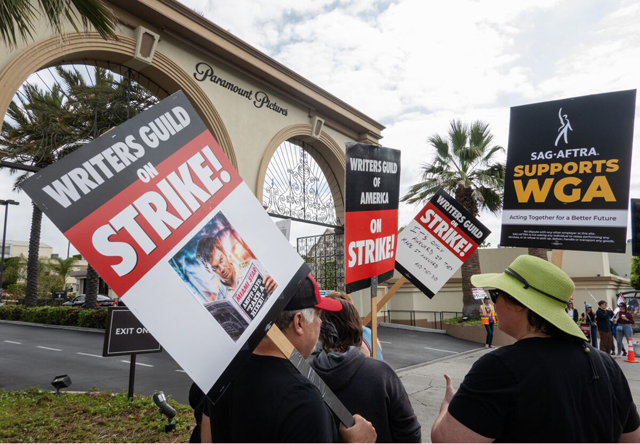
Looking at the state of film criticism in our social media driven world, I feel like there has developed a disconnect over what people actually think a film critique really is. In the last few years, film discourse has very much opened up to allow more voices into the conversation, with social media amplifying opinions across the spectrum. This democratization of film criticism, which has allowed fans and casual viewers to have a voice that reflects back towards Hollywood, has certainly helped to change things for the good in the industry. Instead of having the trades and large media conglomerates dominate the discourse around film, groups that otherwise never had a voice before with regards to media are able to deliver their own takes about Hollywood that break through the wall of insider talk. Minority groups can voice their criticism about representation in various forms of media, and their critiques can now lead to a new re-examination on Hollywood’s part in order to rectify that disparity. But, there is a downside to the increased input of the casual film criticism out there in the media, and it has had it’s own negative effect on not just the media, but the culture as well. Part of the problem is that we’ve reduced film criticism down to a mathematical formula, which itself is a reductive action done to what should be a personal experience. And it’s a problem that Hollywood has only themselves to blame, because they have put too much stock into scoring their outputs in a way that is more friendly to their data driven work flow. While it may help to cover their bottom line by getting quantifiable numbers to base their actions on, it also belittles the art of filmmaking itself as everything becomes standardized.
Of course, the current media trend that I am talking about is a thing called Critic’s scores. These are accumulated numbers based on published film reviews that are put together to create an average percentage that quantifies a movie’s overall score. There are numerous sites that offer this kind of ranking, but the most well known of these is a site called Rottentomatoes.com. Rottentomatoes.com was started in 1998 by a group of undergraduates from the University of California, Berkeley. The site was simply a statistics site that used movie reviews as the catalyst. Interest in the site grew over time, and they eventually were bought by larger media conglomerates; first IGN in 2004, then to Flixster in 2010, and then finally by movie ticket retailer Fandango in 2016, who have been running it ever since. Rotten Tomatoes gained their notoriety through their distinguishable ratings system, which much like a school grading system offered up a pass or fail metric to base a movie’s reception on; only by their branding based on tomatoes, movies either fell into fresh or rotten categories. Anything above 60%, and the movie would be fresh. Anything below that, and it would be rotten. A few years in, once Rotten Tomatoes gained more notoriety, they began to give movies a certified fresh ranking, meaning that the movie statistically could never fall out of fresh territory based on the ratio of the number of reviews and their aggregate score. With certification like this, Rotten Tomatoes scores became marks of quality for films, and film companies began to use their Tomatoes score as part of their marketing. If Rotten Tomatoes deems it fresh, then you will hear of it. Other sites like IMDb and Metacritic also have developed their own ratings systems that in some way or another grab the attention of movie executives.
While seeing how well a movie performs on Rotten Tomatoes can be informative, the statistical aspect of their ratings system can also be misleading. Film criticisms are often multifaceted and nuanced, and it can’t just be summed up in binary fresh or rotten ranking. Sometimes, critics find themselves in the middle, neither loving nor hating a movie, but find the good and the bad in movies that are often hard to fully sum up. Sometimes, critics even change their mind about a film after a sitting on it for a while, giving it a re-consideration after a second or third viewing. But that kind of nuance is just not acceptable in a business that requires immediate feedback. While Hollywood is able to get a quantifiable score out of places like Rotten Tomatoes, they are also getting a snapshot of that movie’s response. And sometimes, that can actually have a negative effect on itself. Something of that order happened happened to Disney with two of their films this last summer. Disney decided to gamble big on the releases of Indiana Jones and the Dial of Destiny (2023) and Pixar’s Elemental (2023) by having them premiere at the prestigious Cannes Film Festival. The reception from the festival was tepid to say the least, and it resulted in both of the films sitting with Rotten scores on RT.com for almost a month before their wide releases based on the few, high brow reviewers who saw it at Cannes. This had a negative effect on both film’s box office, as they performed well below their expected openings. But, over time, Dial of Destiny and Elemental did pull themselves out of the Rotten territory and ultimately ended up fresh at 70% and 76% respectively, with Elemental even earning a very late Certified badge. The movies’ overall response in the end turned positive, but the damage had already been done by those low numbers and both movies struggled at the box office.
We are at a point where audiences are very well aware of the Fresh vs. Rotten metric, and it’s affecting their choices in what movies they go out to see. This is largely due to the fact that movie tickets today are quite expensive and the customer is very discerning about what they want to spend their money on. The Rotten Tomatoes score has become a powerful metric within the film business because it’s an easy to understand rating that all audience can look towards. Much like all consumer ratings out there, people just want to look at the score and determine if it’s worth it to them to invest in it. This is nothing new for film criticism. For most people, when they look at a movie review, they don’t want to waste time reading through the critic’s every well thought out analysis; they just want to see the score. That score of course varies from critic to critic. Critics either use a letter grade, or a star rating, or in my case on this blog a number grade. Some critics even just uses a simple binary rating system in the positive or negative. It’s all based on how the critic wishes to quantify their overall response in a simple way to sum it up for the reader. This of course is what fuels the scores of sites like Rotten Tomatoes, which takes those scores and creates an aggregate number. But there is a flaw in the way this score is put together. Quantifying a review in many ways is subjective. There are plenty of film critics out there who don’t even give a score. How does Rotten Tomatoes take their critiques into account. At this point, we see where the binary system becomes a bit flawed, as a review that sounds negative in certain areas and positive in others without giving out a score messes with the algorithm of the site’s metric. As a result, a guess is made as to where the movie falls, and that can have an effect on the overall score of a movie. This of course becomes even more of an issue because these are numbers that matter a lot right now to Hollywood and has an influence on how they market a film as well as how what they greenlight in the first place.
Published film critics’ scores being aggregated into a number is one thing that becomes a problem when that number doesn’t reflect nuance. It’s also another thing when there is also a user rating in play. Rotten Tomatoes and other sites do offer a secondary number based on input from their own users, which on it’s own is a worthwhile service that allows the casual user to have a say as well. The unfortunate thing about user ratings is how open they sometimes are, which can sometimes lead to abuses of the ranking system. There is this practice that has arisen on places like Rotten Tomatoes called “review bombing,” which is where a coordinated effort is made to load a bunch of negative reviews all at once onto a websites user rating in order to purposely drive the overall score down. Most often, this is done with the purpose of damaging the public perception of a movie, which the organized group can point to as proof of their own slanted opinion. You definitely see the effect of this with movies that have very polarized critics’ and users’ scores on Rotten Tomatoes, such as Captain Marvel (2019), Star Wars: The Last Jedi (2017) and The Little Mermaid (2023). What makes review-bombing a suspicious activity is that it usually happens before a movie comes out, as most of the user reviews seem to have been purposely negative without even having the context of seeing the movie. As observed, the most often reason for these review bombs happen is because a group is attacking a film for it’s content rather than artistic merit, such as if it is focuses on a marginalized group or contains a message that they object to. The intent of the review bombing is to get Hollywood’s attention and make them believe that these often small minority opinions are much bigger than they really are and try to force the industry to conform to their own narrow-minded worldview. It may be dishonest, but it has had an effect before. I would argue that Lucasfilm took the review bombing of The Last Jedi too seriously and it caused them to do too much over-correction which resulted in the mess that was Star Wars: The Rise of Skywalker (2019). Rotten Tomatoes even recognized the damaging effects of these trolling review bombs and they changed their metric to only reflect certified user reviews. Sadly, we are in a place where valid criticism and baseless trolling get mixed together, and it unfortunately becomes even harder to allow genuine non-professional voices into the mix without having to gatekeep free speech.
So, how do we look at fair film criticism in this kind of environment where opinions are too often hard to take seriously. I try to look at what I value in film criticism. When I was developing into a burgeoning cinephile in my formative years, I took the opinions of film critics seriously. My childhood overlapped with the rise of film criticism as entertainment, as part of my weekly routine was to watch Siskel & Ebert’s syndicated review show on TV. Gene Siskel and Roger Ebert may have unfortunately also contributed to the reductive binary rating metric that place like Rotten Tomatoes emulate; famously popularizing the thumbs up or thumbs down rating on their show. Truth be told, that’s what made their show a draw for me as a young film lover, as I eagerly wanted to see which way the thumbs would fall for each movie on their show. But having gone back to look at some of their old reviews on YouTube, another thing occurred to me about what they brought to their show; something that I probably didn’t rightfully appreciate as a teenager. Their reviews were simply not just about the binary thumbs rating; it was about how they expressed their thoughts about the movie. That was the key to their success as film critics. They could articulate why a movie was good or bad. That’s the art of criticism that you just can’t put into a numeric score. Film criticism is about engaging with a work of art, and stating what effect it had on you. That’s what makes being a film critic worthwhile; it’s a art form within itself inspired by the response that we have to any type of media. Some can deliver a succinct opinion within a strongly worded paragraph while others can spin a thesis’ worth of thoughts across multiple pages, and any one of these criticisms can be just as valid whether positive or negative because it is genuinely coming from an honest place. It’s that kind of personal touch that in more and more ways is getting buried down in the discourse of film criticism as movie ratings are becoming more of an impersonal metric.
As it has become increasingly clear over time, the perceptions of Hollywood’s highs and lows are becoming increasingly manipulated into becoming part of larger narratives about culture and the arts. People want to draw their own conclusions about Hollywood and they use simplified metrics like those found on review sites like Rotten Tomatoes to define their narrative. People attacking Hollywood for going “woke” for instance cite user ratings from Rotten Tomatoes and IMDb as proof of Hollywood being out of touch with the audience, though as I stated before those ratings can be heavily manipulated. At the same time, certified ratings can also be skewed in favor of a positive response for a movie. Sony Pictures got caught red handed with having a fake film reviewer submit positive reviews of their movies, and this may have juiced the numbers for some of their films on these ratings sites. As we’ve seen, systems that can be easily manipulated should not have this kind of influence over an industry, and yet they are increasingly getting the notice of Hollywood who desperately want to use that Fresh rating in their marketing. Those abusing the privilege of contributing to a film’s overall ranking are doing so with the intent of manipulating Hollywood, and that could lead to some dangerous consequences, like the silencing of disenfranchised groups who don’t have the same obsessive drive as internet trolls to hijack the narrative. In the end, though site like Rotten Tomatoes have an immediate impact on a movie, it at the same time is not a long term one. You’d be surprised how many movies receive a Rotten rating on RT.com and then years later develop into cult classics. I can think of a dozen movies even in the last year which I think were rated too low or too high for my opinion. A movie I liked, Shazam: Fury of the Gods (2023), received a rotten 53% from critics, which shows that I fell outside the majority consensus on that movie. But at the same time, it doesn’t motivate me to change my opinion either. Those critics ratings on Rotten Tomatoes or any other site are not a monolith, and if you disagree with the overall ratings, that’s fine. Movies are a subjective art and we should all like what we like and not feel pressured to accept the “narrative.”
And while I do point out a lot of the flaws of the Rotten Tomato critical metric, there are some positive things that the site has done for movies in general that are worth celebrating. The site does spotlight movies that otherwise would’ve gone unseen and it does function as a genuine entertainment new site, though one that is imbedded with the industry itself. The same goes for IMDb, which is an invaluable resource for film information of all kinds. People just need to look beyond the surface level of those Fresh or Rotten ratings and they’ll see the added worth of the sites they visit. That’s something that is true about all film criticism in general. Don’t just skip ahead to the final rating; read through and engage with the opinion that the film critic presented to you. You may not agree with it, nor should you be obligated to, but taking into consideration the arguments made by a critic will allow you the view to have more nuanced reactions of your own. When visiting Rotten Tomatoes, look through the blurbs of each critics reviews; you’ll find that sometimes there’s a caveat to a positive review or a silver lining to a negative one. Maybe use those blurbs to seek a link to the original review itself if you are compelled to read more. Some movies generate some very clear cut, one-sided opinions, but you’ll find a lot of other movies that often leave people conflicted. One thing that I do like about the Certified Fresh label given to movies on Rotten Tomatoes is that they are often almost always won by small movies that normally would go unseen by mass audiences. If the Rotten Tomatoes metric carries that much weight in the industry, it’s best that movies that should be spotlighted are the ones that receive the best responses with critics, and they are able to float to the top thanks to Rotten Tomatoes Certified label. That’s ultimately what we want as film critics, to help get something that meant a lot to us seen that otherwise would be ignored. We use our voices to articulate the love we have for film, and some of us do so in writing. That’s why I created this blog site. You may not agree with every opinion I have to say here, but I tell you that every word I write is my own and I am happy that it inspires any engagement from any of you, even if it’s in conflict with my opinion. While Rotten Tomatoes and other sites like it are valuable as an aggregate collector of film critiques, just know that movies are more than just Fresh or Rotten; they are experiences that defy being just a number.








